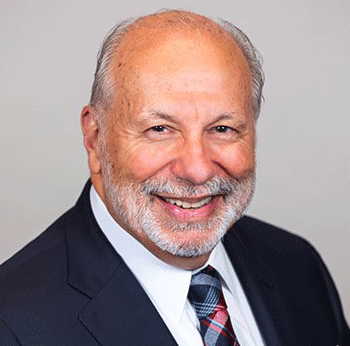Member Perspectives
by Sal Salvo
If you have ever read the book, “The Millionaire Next Door” by Tom Stanley and William Danko, you would have read that 50% of all millionaires in the US don’t show up on any of the wealth screening tools available to us. Many of these individuals don’t belong to country clubs or use credit cards, very often drive used cars, rarely take lavish vacations, and tend to live in blue-collar neighborhoods. So how do we, in planned giving, find these people and engage with them? Fortunately, I am part of an organization called the “Donor Motivation Program.” We collectively have spent over half a million dollars on copy writers and PR experts to come up with a sequential invitation system to attract these “Millionaires Next Door” to our events.
Recently, we worked with a major charity in northern New Jersey who received a very good response to our sequential invitations. A couple in their mid-60s attended. For confidential reasons I will call them Betty and John and change some of their personal information in this story to protect their identity. John was a middle manager in a large US corporation. Betty was a tech supervisor in a mid-size corporation. They were an unassuming couple with lots of questions.
The seminar motivated them to take advantage of the complementary and confidential meeting to get more of their questions answered. At the meeting we learned that they had a net worth of just under ten million dollars. In all the years that I have been doing this type of work, it still amazes me how these “Millionaires Next Door” attend. They did not inherit this money, they worked hard, lived frugally, and saved it. They raised two great kids and educated them. They are multimillionaires. They are people of faith who want to be good stewards of what they have. However, they want most of their hard-earned money to go to their two children. Charity was not on their radar. They did not think they were wealthy enough.
The first thing we needed to do was stress test their current plan. What we found, if they both died today, $1,700,000 would be left to the government with no money earmarked for charity. Betty and John were fine with that plan. Leaving monies to charity was not a high priority for them. The kids were going to spit $7,800,000. That was a lot more than they started out with. I asked them what if we could eliminate the government and leave $4,900,000 to charity and $9,400,000 to your two children. That got their attention! This is what I love about planned giving. It is easier to motivate someone who is passionate about philanthropy. However, getting a planned gift from someone who would not normally consider is still doable when you are able to give them what they want. This is what authors Kim and Mauborgne call “Blue Ocean Strategy” in their book by the same title. The authors contend that cutthroat competition creates a bloody red ocean of charities fighting over a shrinking donor pool of passionate philanthropists. You see your major donors are also the major donors of lots of other organizations all with great causes and missions. What Kim and Mauborgne suggest is you create a blue ocean of untapped new markets ripe for growth. That market, I believe, is the donor centric market. These are the uninformed hard working “millionaires next door.” They want what’s in it for them and if you show them, they will leave an abundant amount of money and property to your organization in the form of planned and outright gifts.
Getting back to Betty and John. What did we do to accomplish this plan? Keeping this type of planning as simple as possible is key. We pointed out that their retirement plans were the worst assets to leave to their children and grandchildren. Under the Secure Act, passed into legislation in 2019, all IRA monies left to children must be paid out within 10 years and get fully taxed at the highest possible tax rate to their kids and grandkids. This is the perfect asset to leave to charity and replace it with life insurance that will go to their kids tax-free, in-part using some of Betty and John’s required minimum distribution to fund the wealth replacement insurance. We also used some additional income tax strategies to leverage conversion over time to a Roth IRA. This has the potential to save them seven figures in income tax during their lifetime.
Let’s summarize what they accomplished under their original plan. They were leaving the government $1,700,000, zero to charity, and $7,800,000 to the kids. Under the new plan, zero goes to the government, $4,900,000 to charity and $9,400,000 to the kids. How many of you think the kids were unhappy with this plan?
Sal Salvo
Founder
Institute for Family Wealth Counseling
973-285-3580
ssalvo@sfr1.com (cc my associate Britney Halpern at bhalpern@sfr1.com)

